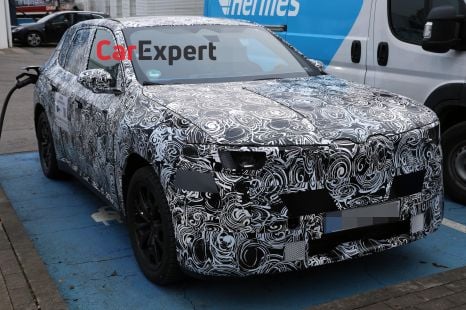

Derek Fung
2027 BMW iX1 spied with new body on Neue Klasse EV platform
3 Hours Ago
Guest User
My dashboardReal Japanese luxury meets aspirational Japanese luxury, in the mid-sized SUV space. The differences aren't actually so stark.

Senior Contributor
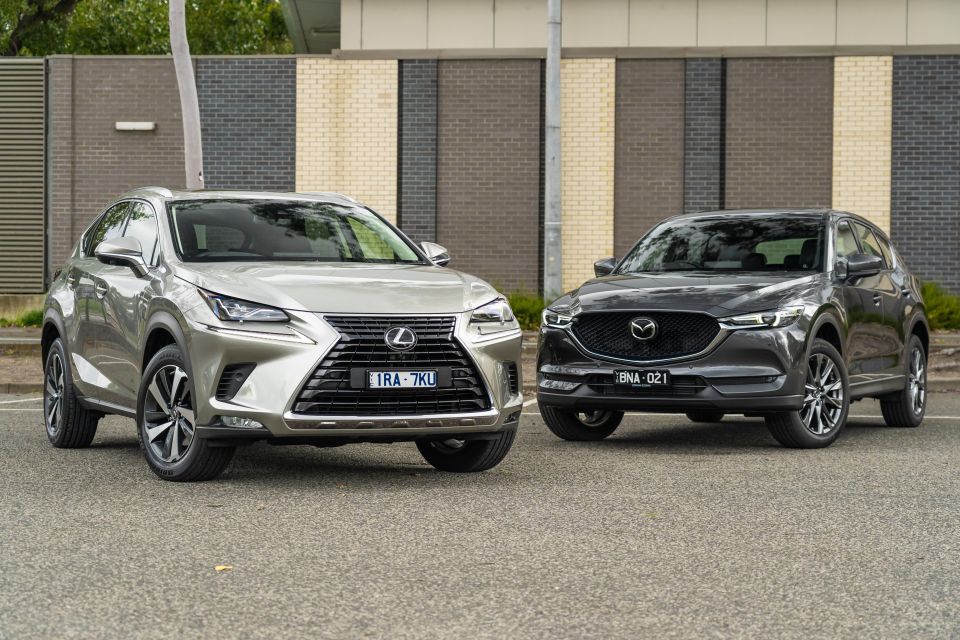

Senior Contributor
Mazda has long positioned its cars in-between mainstream fare and more premium products, with the hope of luring everyday buyers after something that looks and feels luxurious.
Indeed there have been occasions where this writer has found Mazda’s interior designs seem to give luxury offerings, such as those from fellow Japanese company Lexus, a run for their money.
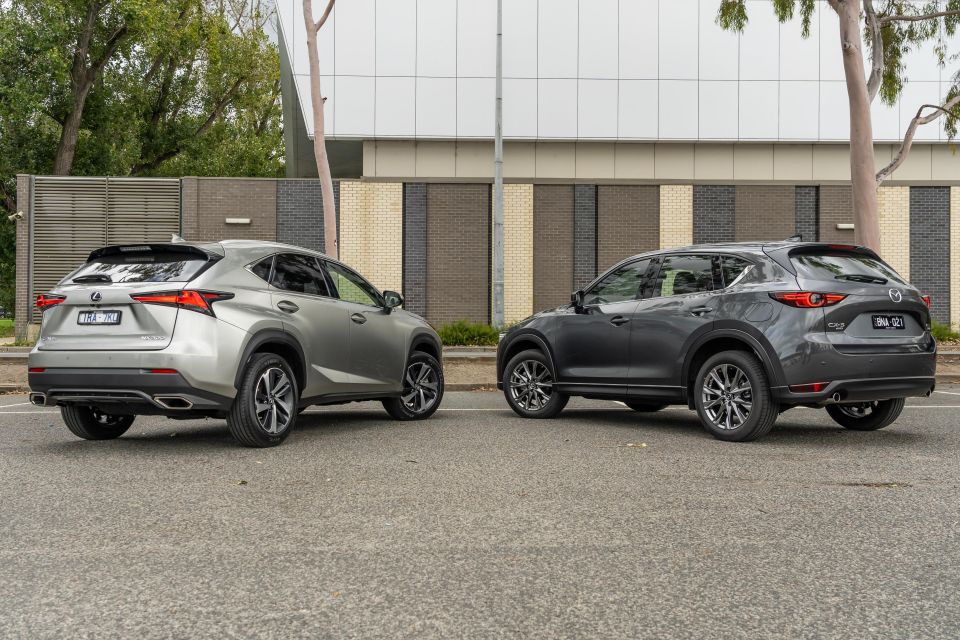
So when we grabbed an updated 2021 Mazda CX-5 Akera to review, we thought it made sense to put one up against a Lexus NX – a regular top-seller in the luxury SUV market.
In so doing, we might perhaps hone in on what actually makes a vehicle a luxury proposition. We should also note that the Lexus NX is near the end of its generational life cycle, so will never be more vulnerable. The new one will be a big step up.

The base Lexus NX300 Luxury kicks off for $57,500 before on-road costs, which equals roughly $63,600 drive-away depending on your State of residence, plus another $1750 for premium paint.
The top-of-the-range Mazda CX-5 Akera wears a recommended list price of $51,880 before on-road costs, equating to $55,490 drive-away plus a further $495 for the swish paint.
So expect about a $8000 differential between an entry Lexus and range-topping Mazda. We got these drive-away prices from each brand’s website using a Melbourne postcode.
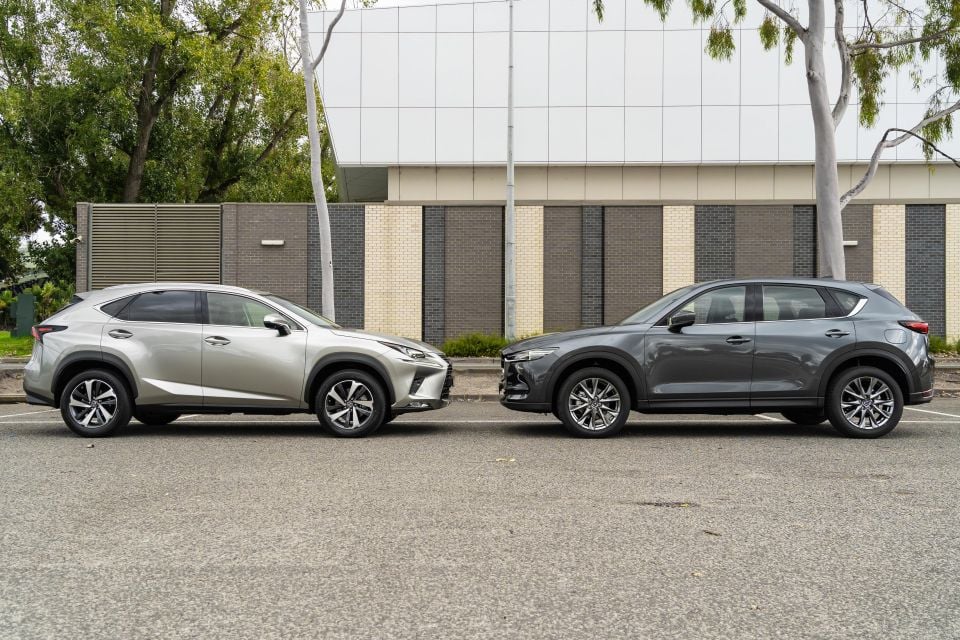
Obviously this pair are the ideal competitors on a cost basis, and so our specification analysis below will contrast them.
However, the Lexus NX we were actually able to borrow for illustrative purposes and which has been photographed here is the top-of-the range NX300 Sports Luxury which costs $76,336 before on-road costs or around $84,900 drive-away.
That’s almost a $30,000 premium over the flagship Mazda.

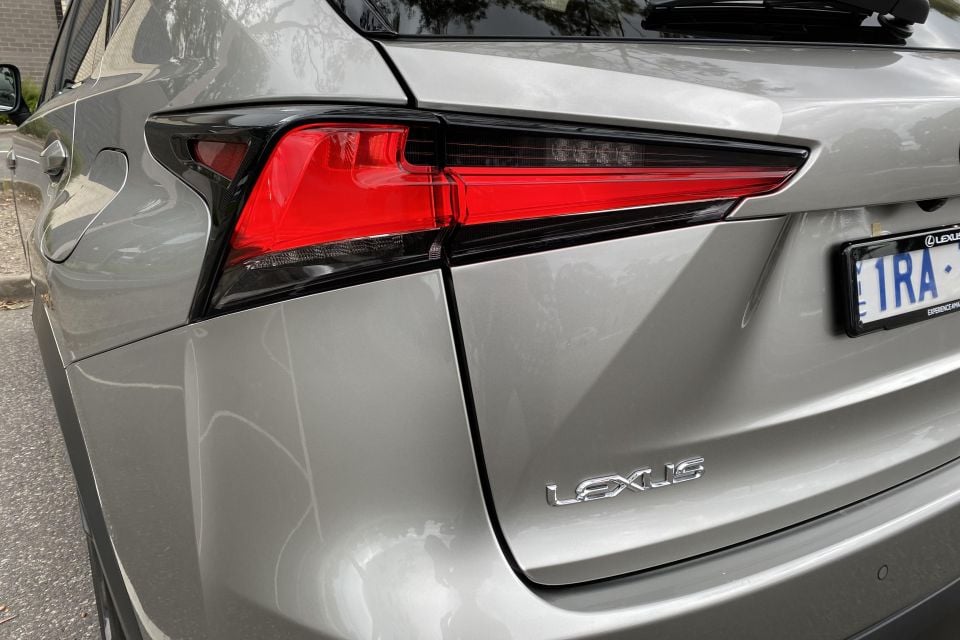

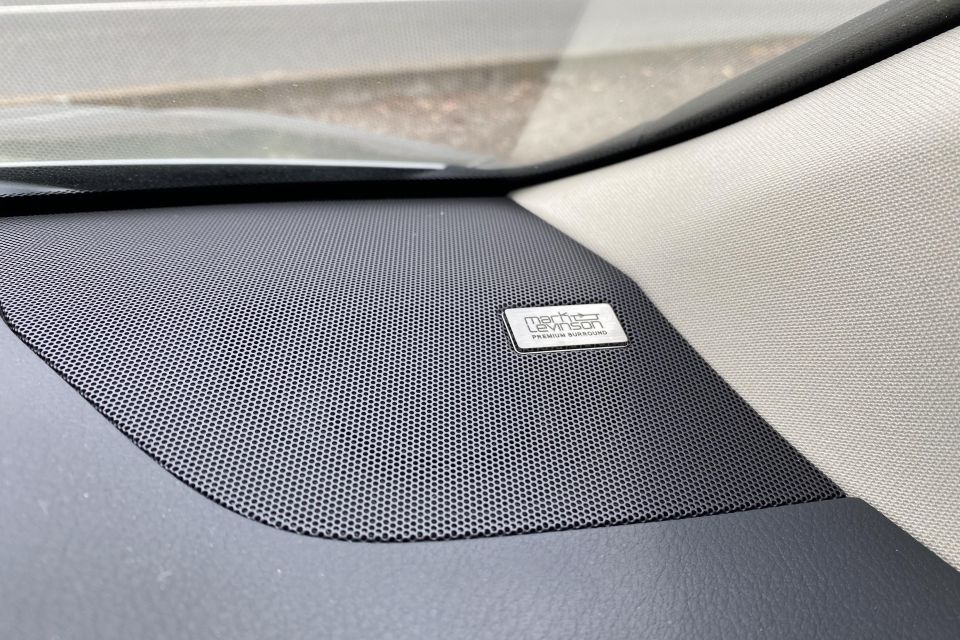
First, the base Lexus NX Luxury and a top-of-the-range Mazda CX-5 Akera offer a broadly similar list of features. These include:
One feature that you get in the Lexus NX300 Luxury that you don’t find in the Mazda is a powered steering column. Swish.
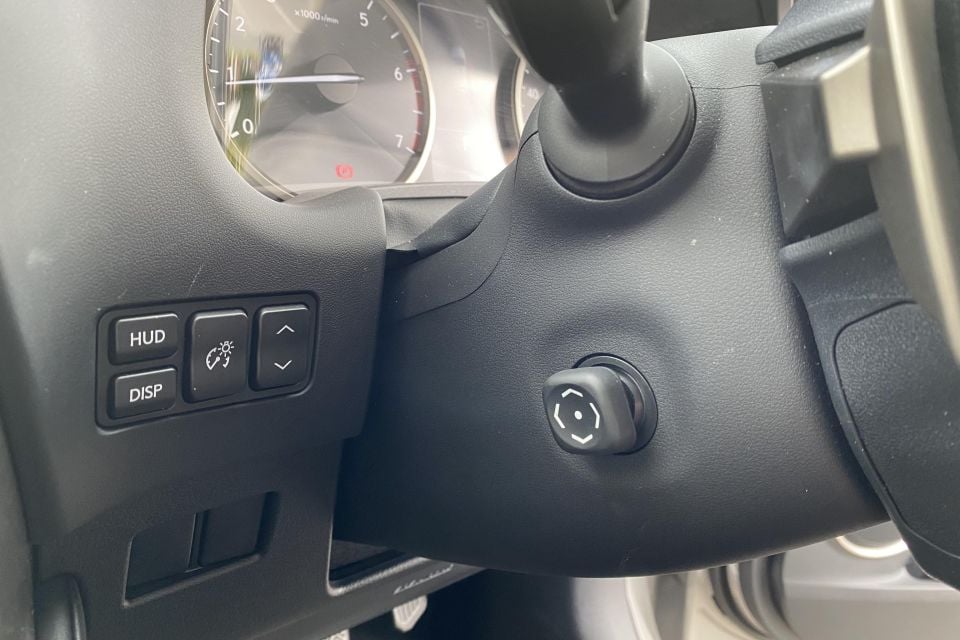
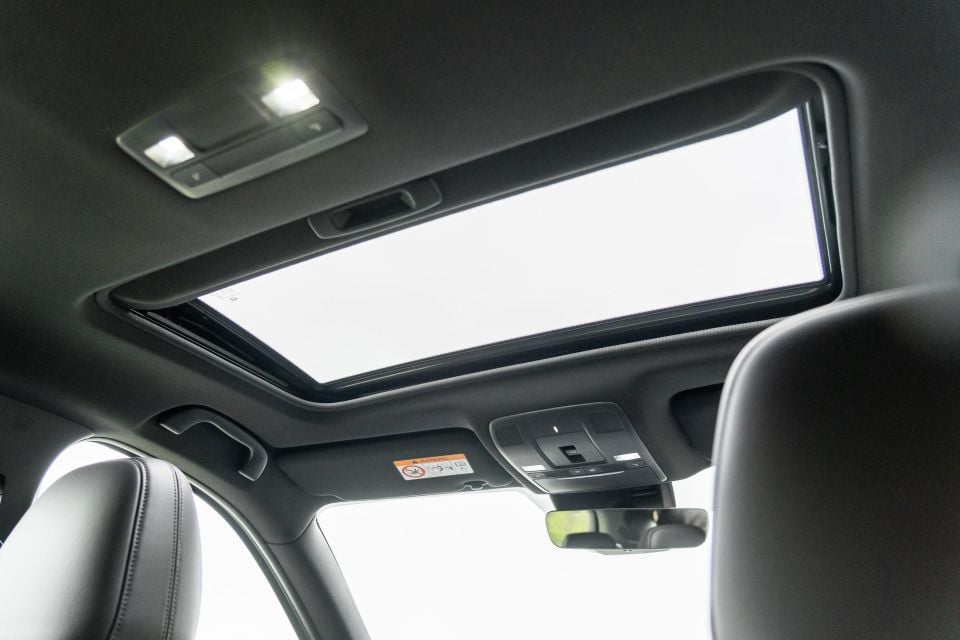
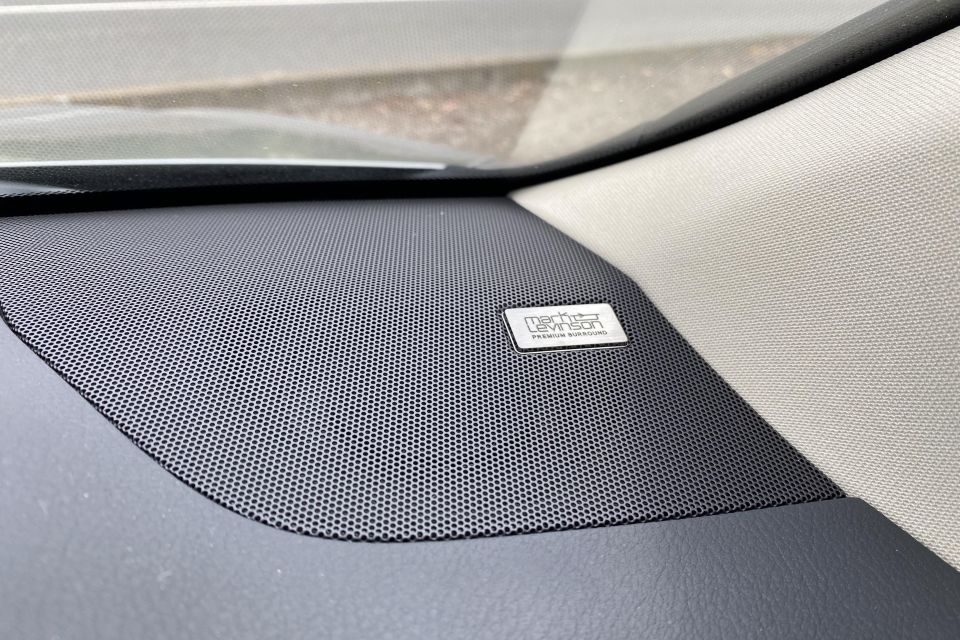

But the cheaper Mazda counters with extras not found on the base Lexus such as a sunroof, Nappa leather instead of synthetic leather, ventilated front seats, driver’s memory seat, heated back seats, a head-up display, heated steering wheel, and 360-degree camera.
Stepping up into the more expensive Lexus NX300 Sports Luxury rectifies this disparity, with all of the features mentioned in the paragraph above fitted as standard.
Above this list it also adds: more powerful Tetrad LED headlights, adaptive variable suspension, sequential scrolling indicators, a wireless phone charger, and an upgraded 14-speaker 980W sound system.

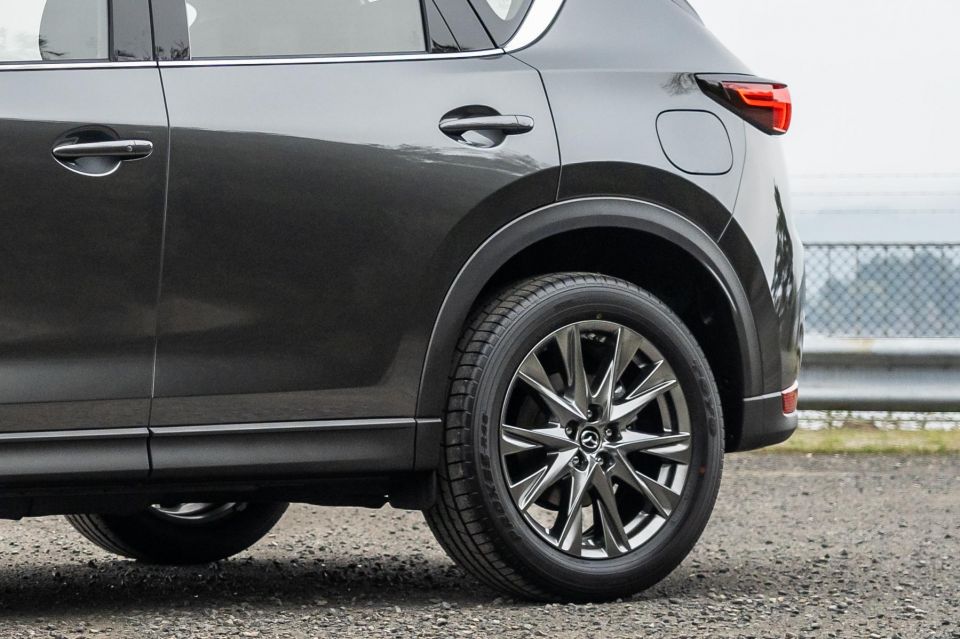
Still, on a purely spec-for-money basis the Mazda takes the chocolates.
The free paint choice on the Lexus is Onyx Black, with Sonic Quartz, Mercury Grey, Titanium, Graphite Black, Vermillion, Khaki Metal, and Celestial Blue all an additional $1750. The Lexus’s ‘self-restoring’ (for minor scratches) paint finish has a subjectively thicker and nicer appearance.
Free paint choices on the Mazda include Snowflake White Pearl, White Mica, Titanium Flash Mica, Eternal Blue Mica, Deep Crystal Blue Mica, Jet Black Mica, and Sonic Silver Metallic. Machine Grey Metallic, Polymetal Grey Metallic, and Soul Red Metallic are all $495 extra.


The Lexus NX and Mazda CX-5 both come with autonomous emergency braking (AEB) for cars, pedestrians and cyclists; active lane-keeping aids, active cruise control, automated high-beam, rear cross-traffic alert, and blind-spot monitoring.
Both have dual front airbags, dual front-side airbags, and full-length side-curtain airbags.
Both vehicles carry five-star ANCAP crash ratings with 2017 date stamps. You can read the Lexus’s report here and the Mazda’s here.
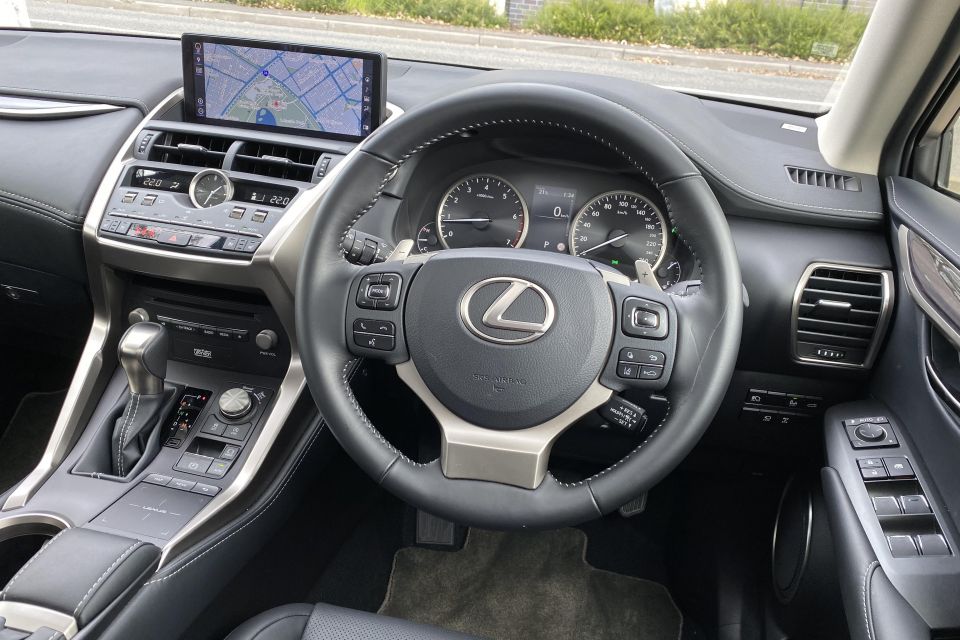
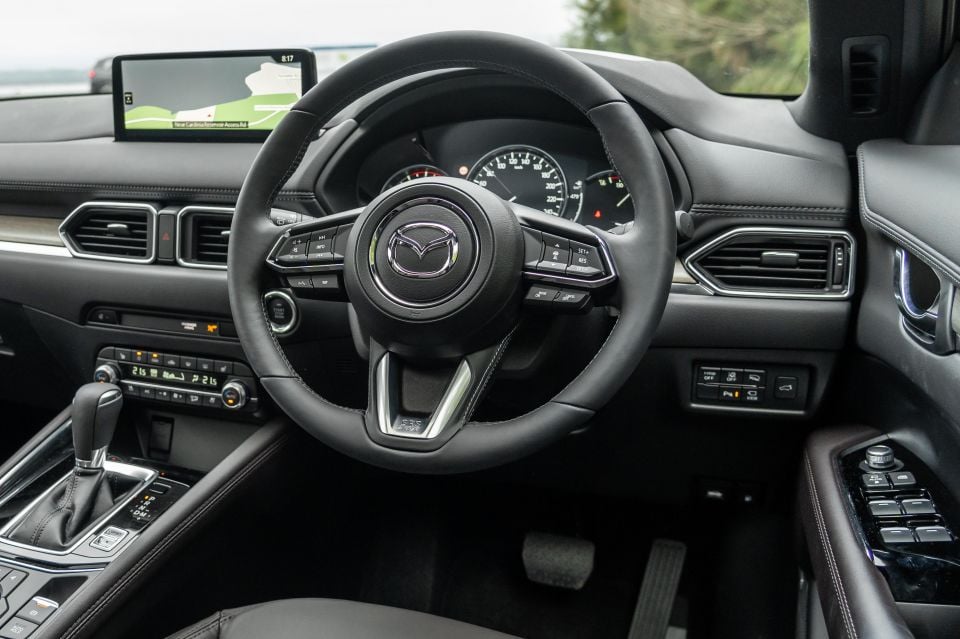


The Lexus does feel more premium in terms of materials and has more supportive front seats, but the differences are not as stark as you might imagine. It’s hard to quantify but I’d be inclined to say the Lexus feels 10 to 20 per cent more upmarket.
The NX’s deep-pile carpets are plusher, trim pieces along the centre tunnel and fascia are put together better, the padded doors and dash surfaces are squishier, the stitch-work is nicer, and the knurled or damped switches more tactile-friendly.
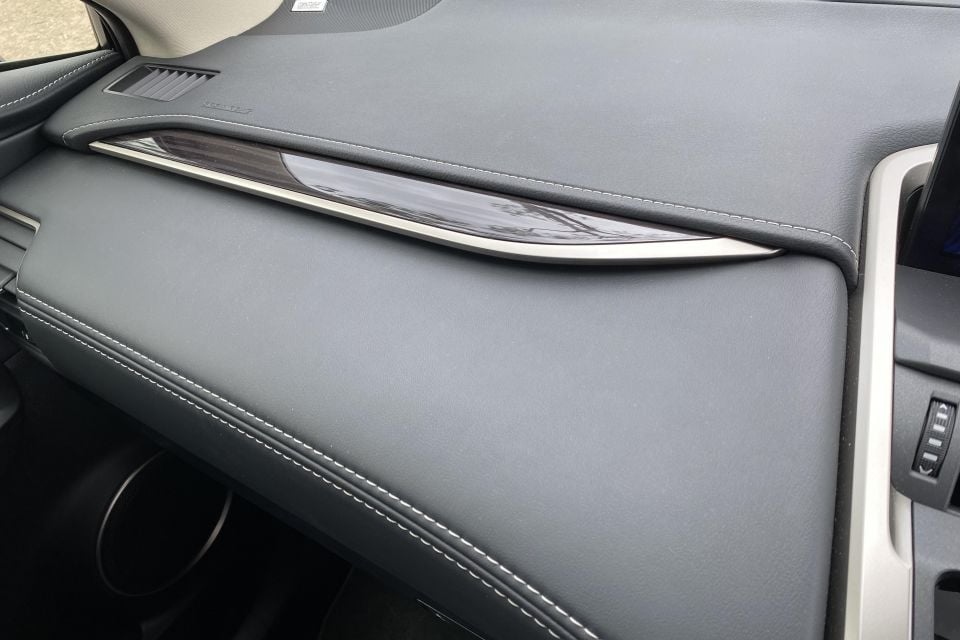
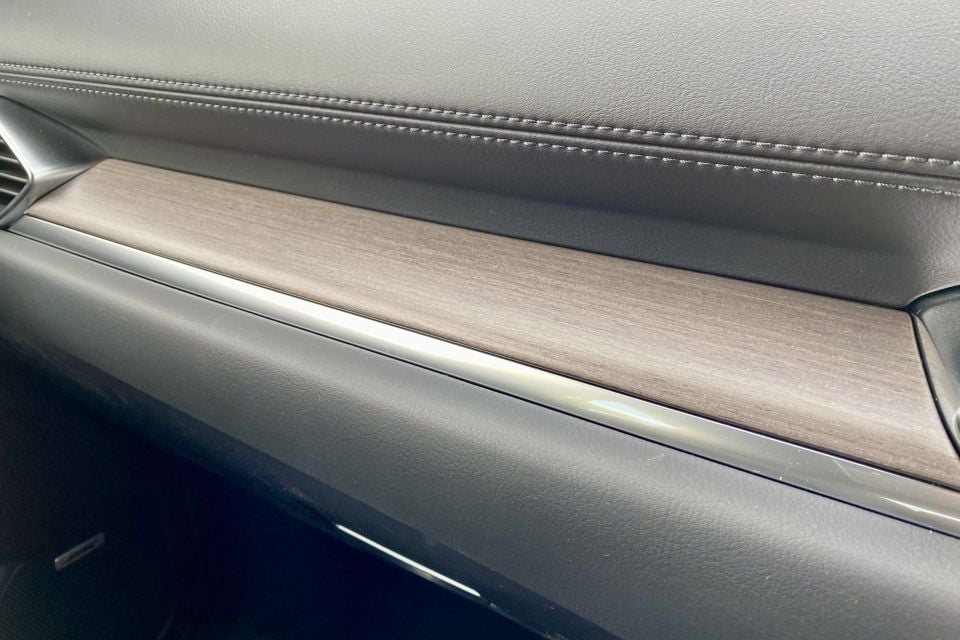
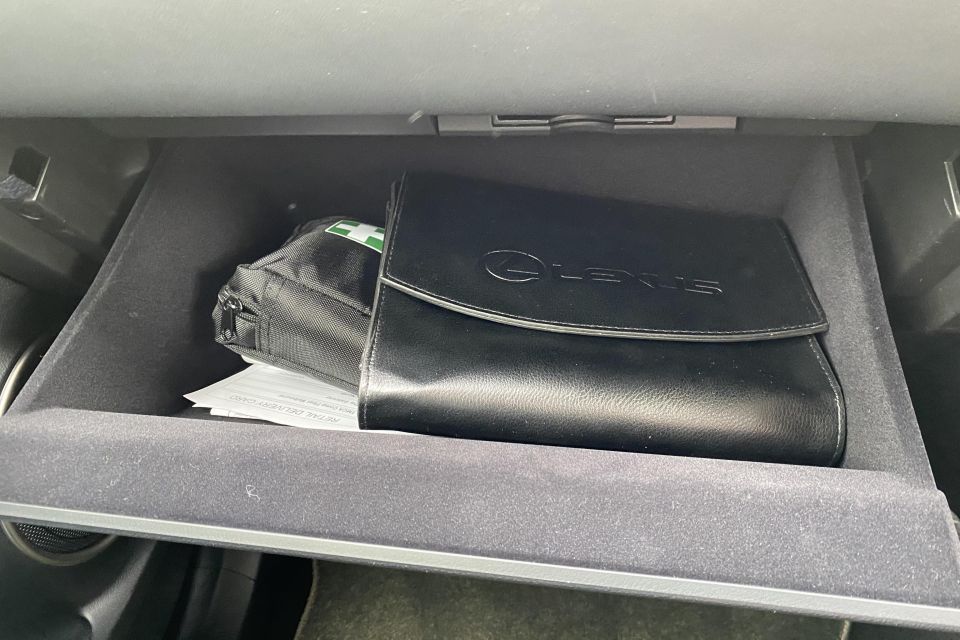
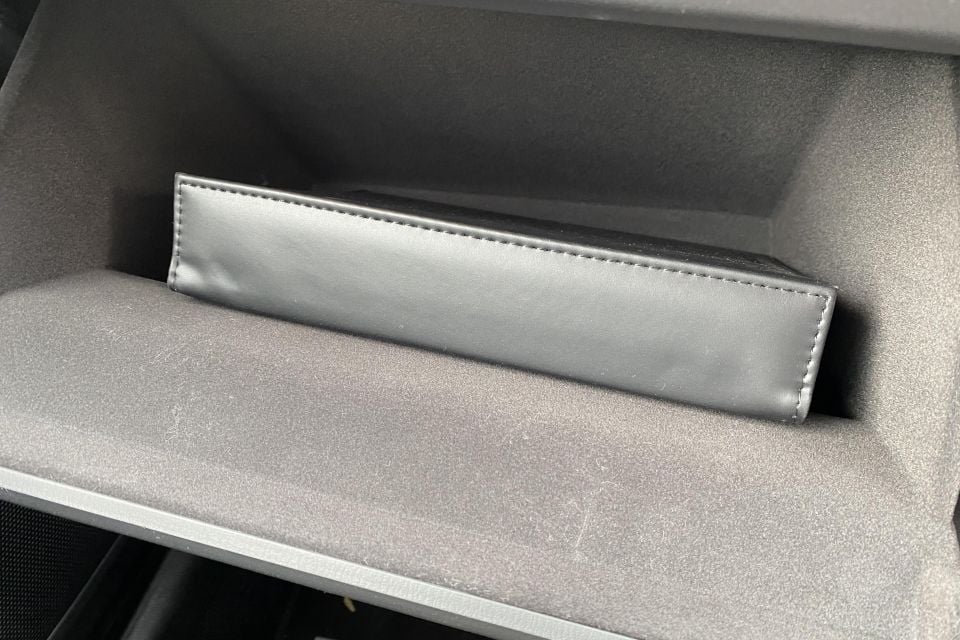
But there’s not a colossal difference given the price discrepancy, which says a lot about the Mazda. The Lexus is put together like a Swiss watch, and the Mazda isn’t out of the same ballpark. They even have the same felt-lined gloveboxes.
To my eyes the Mazda’s Russet leather trims and real wood dash inserts look as swish as the Lexus’s contrasting wood and hide trims do, though its doors don’t ‘thunk’ shut in quite the same reassuring fashion as the NX’s.


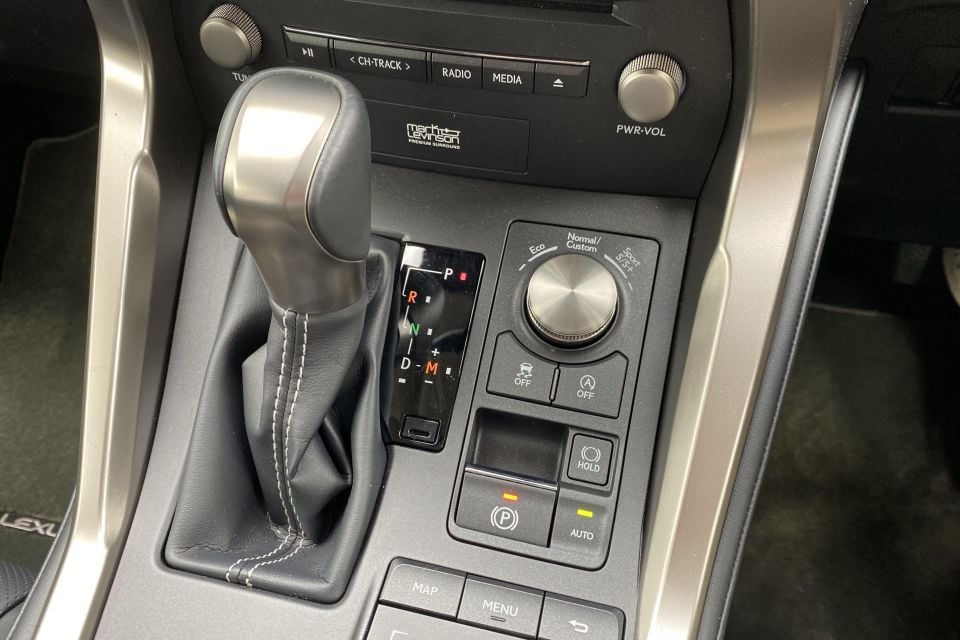
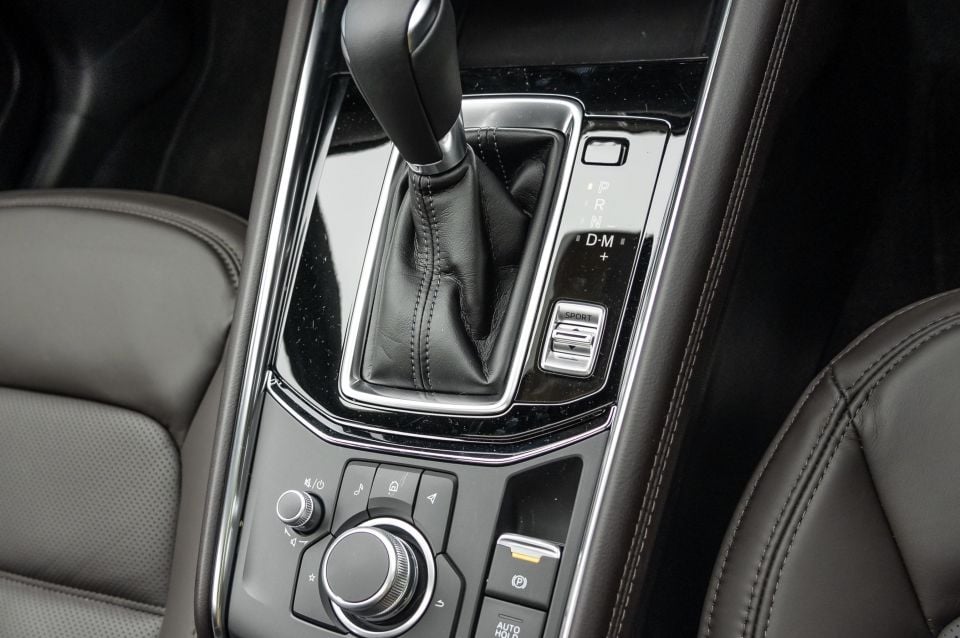
The Lexus’s button-laden fascia juts outwards more than the Mazda’s, which can impinge on knee space for taller people, but it’s also better-lit, higher-mounted, and a mite more logical than the Mazda’s layout.
The Lexus avoids overuse of dust-prone glossy black trims unlike the Mazda, and small touches like its handbrake button and drive-mode select dial are smoother to operate.
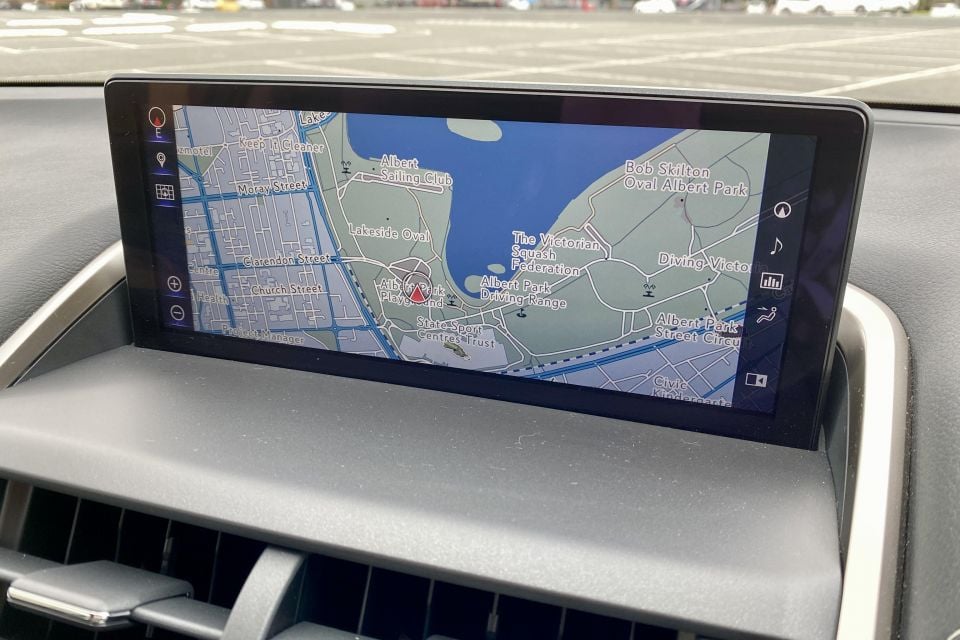

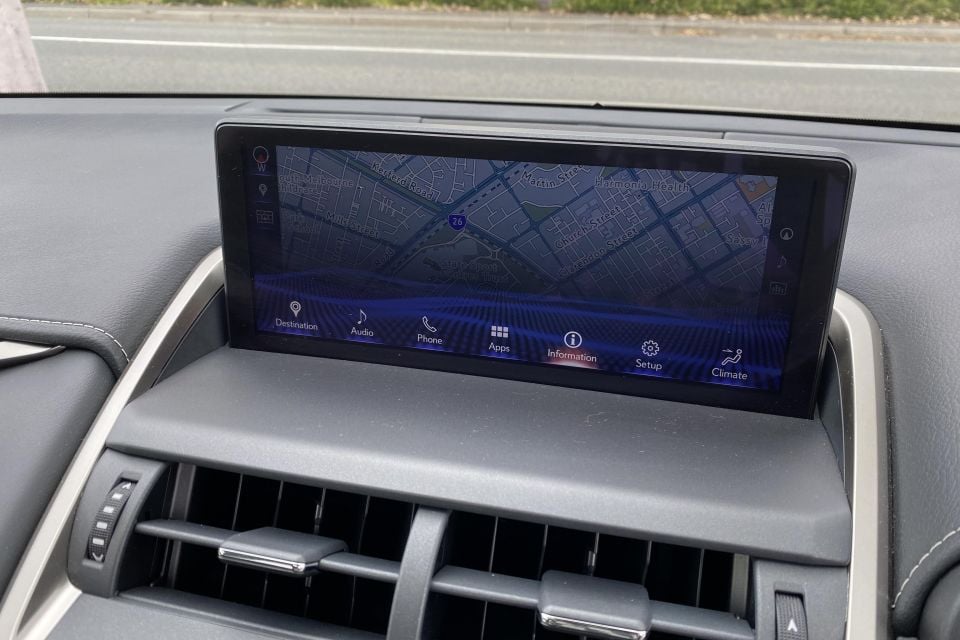
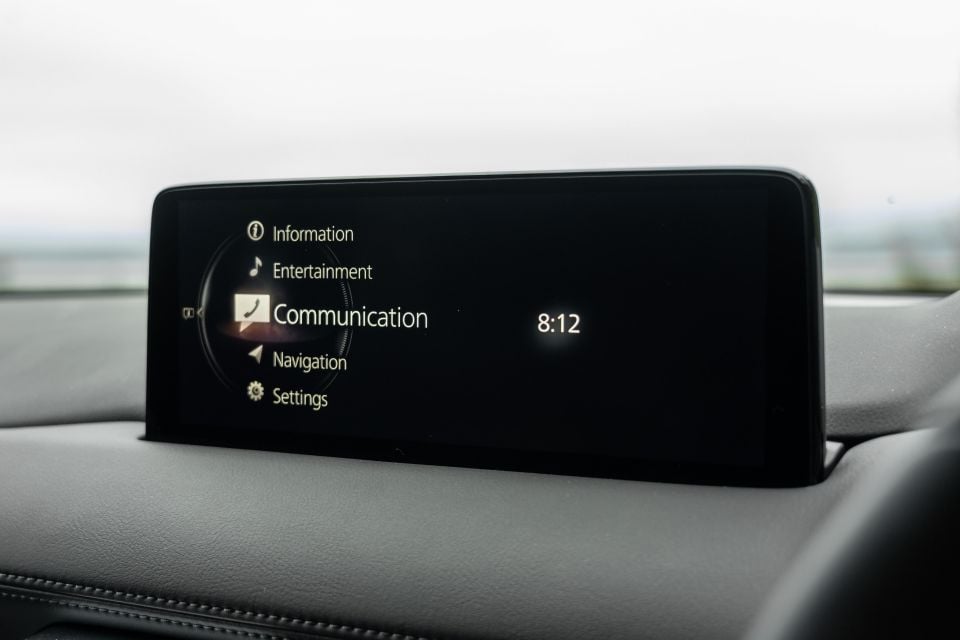
But when it comes to ease-of-use for infotainment the roles reverse. Neither car uses a touchscreen, but the Mazda’s rotary dial and shortcut button array is more immediately intuitive than the Lexus’s trackpad.
The Lexus does have classier fonts and nicer light signatures, but the user experience is largely similar. The main area of difference is in the sound systems. Mazda’s Bose audio is good, the Lexus’s Mark Levinson system superb.
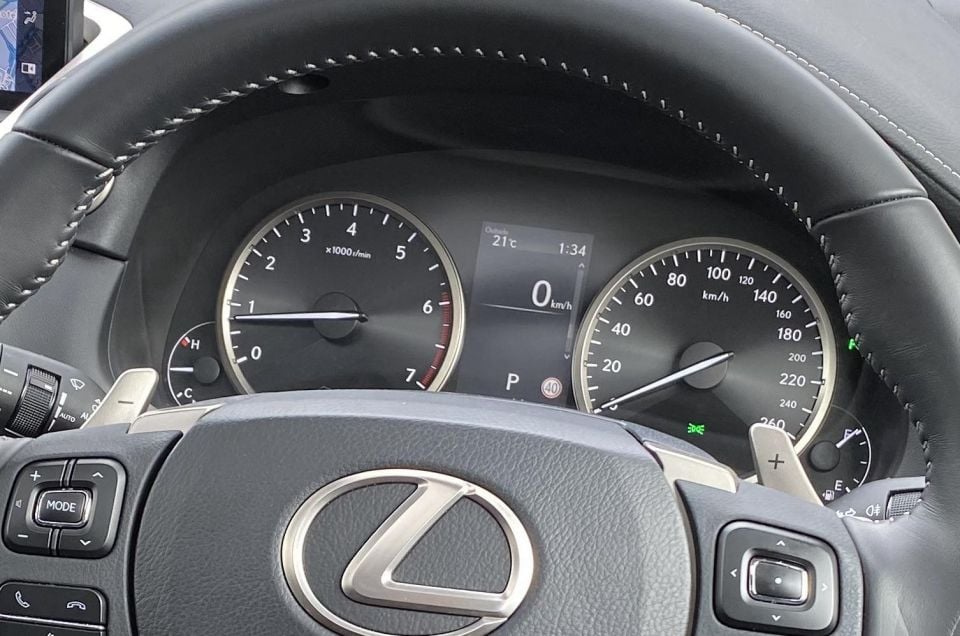

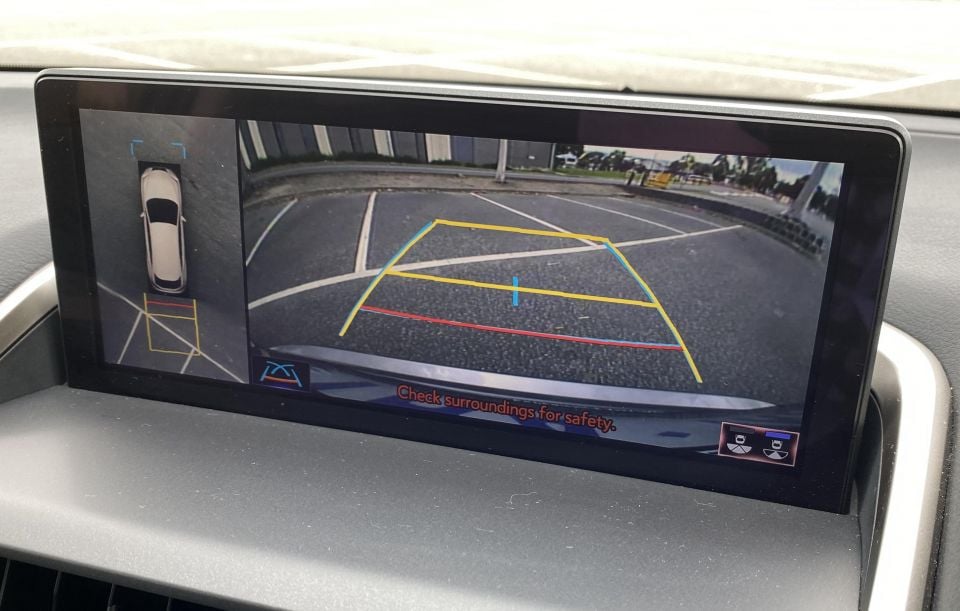

In terms of instrumentation, the Mazda’s 7.0-inch TFT centre cluster flanked by analogue gauges is larger than the Lexus’s, and they have similar head-up display functionality.
As the gallery above shows, they also have similarly capable overhead-view cameras. The Mazda’s resolution might even be a smidgen clearer.
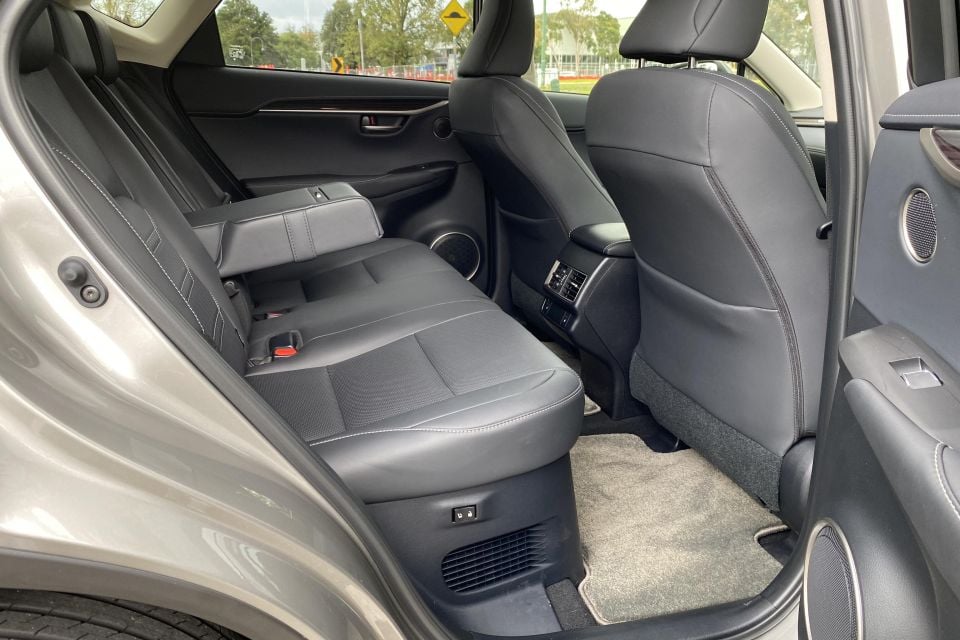
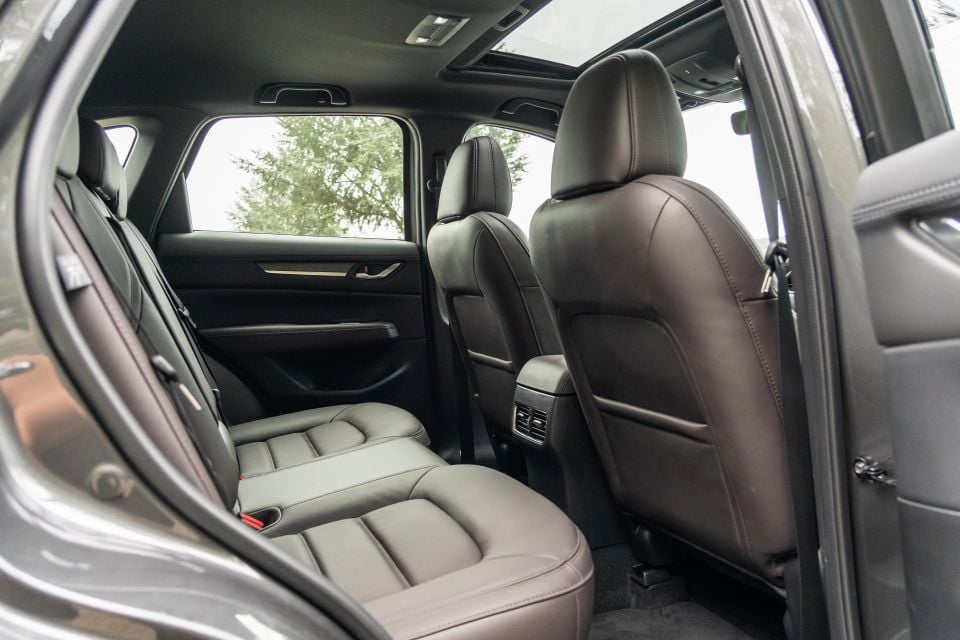
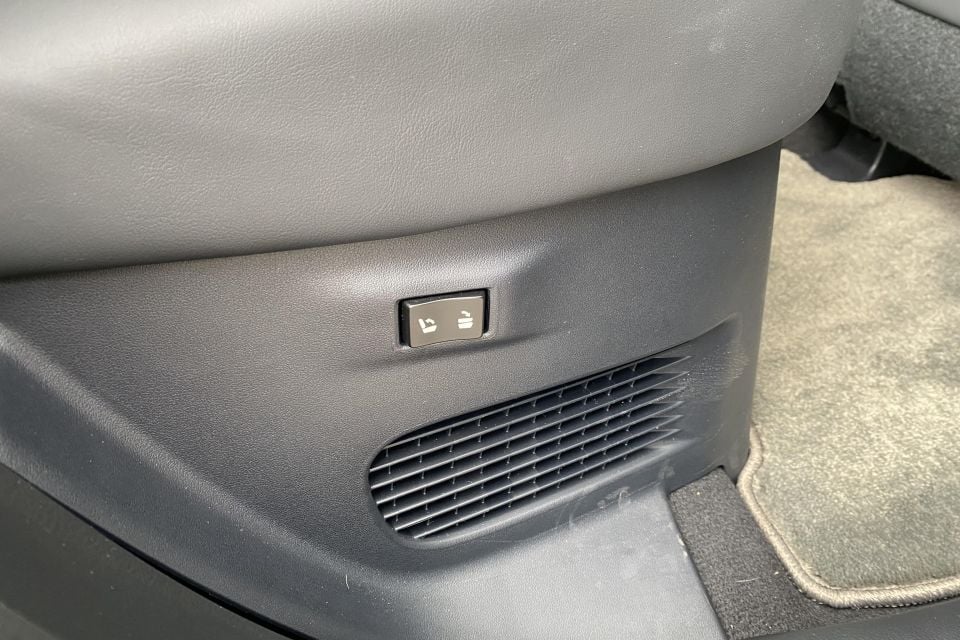
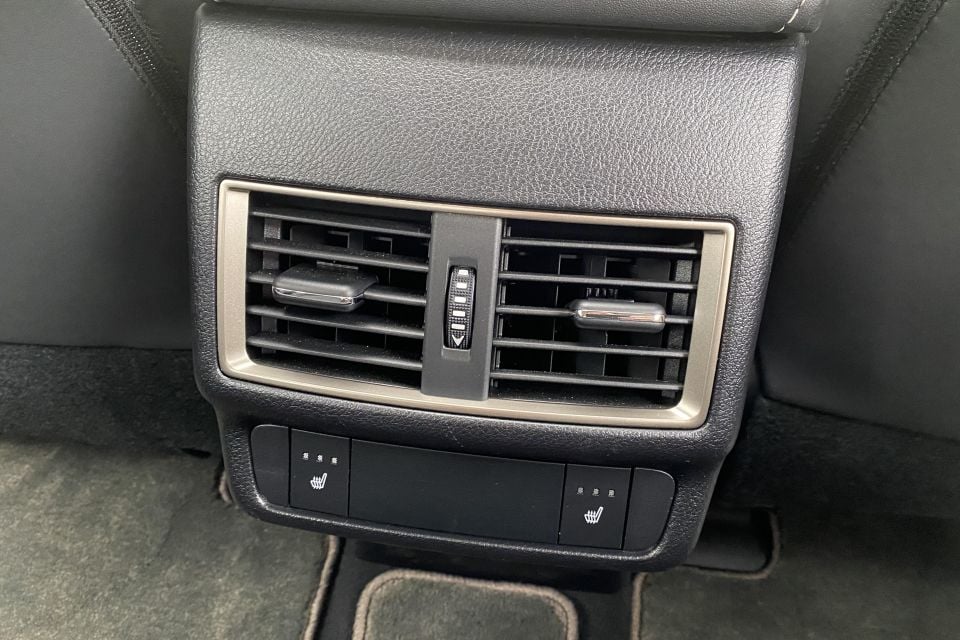
Where expert car reviews meet expert car buying – CarExpert gives you trusted advice, personalised service and real savings on your next new car.
Neither is the final word in back-seat space, but both will conformably accommodate two 185cm adults. The Lexus’s longer-in-the-base middle-centre seat is better.
Each has rear vents and heated outboard seat bases – the Lexus’s buttons are on the back of the centre console and the Mazda’s hidden under a closing lid on the flip-down centre armrest.
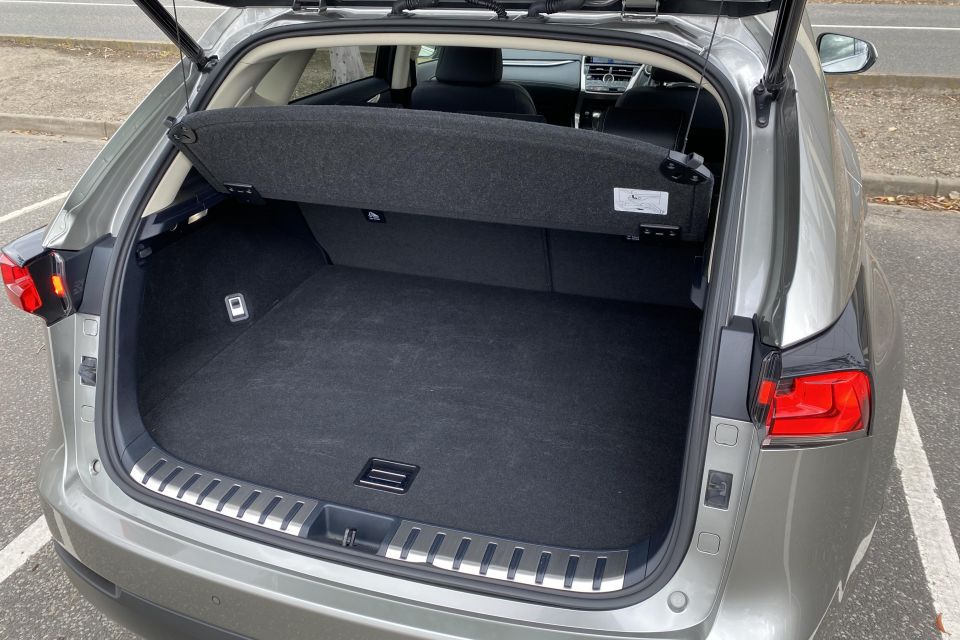


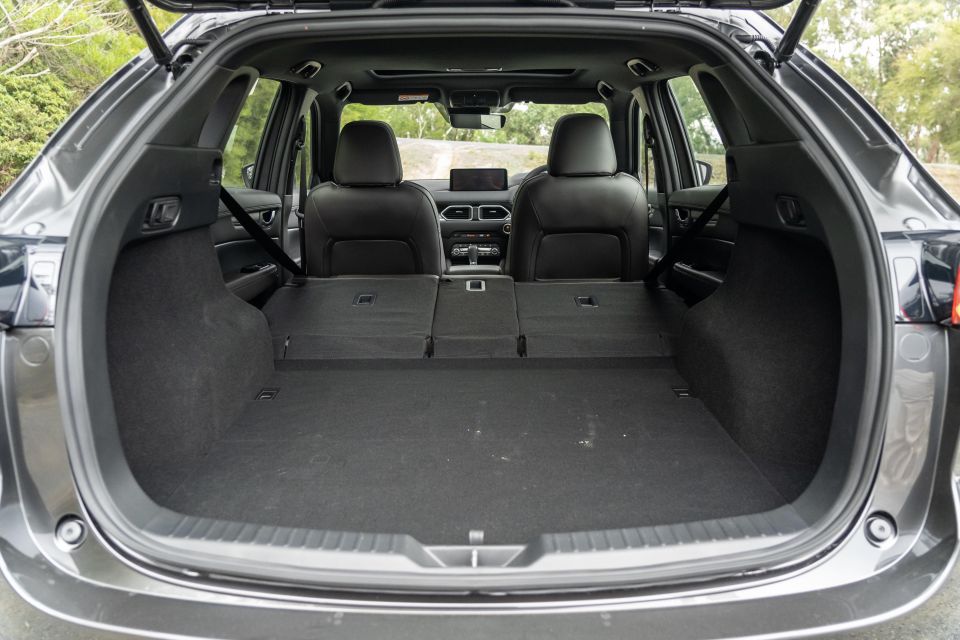
The Lexus’s back seats recline and fold down electrically while the Mazda’s are manual, though the latter’s 40:20:40 folding arrangement is more practical than the Lexus’s. Both let you fold the seats flat from the boot area.
The Lexus’s boot stows 500 litres with the back seats in use, and 1545L with the back seats folded – 58L and 203L more respectively than the Mazda’s claim.
| Lexus NX | Mazda CX-5 | |
|---|---|---|
| Length | 4640mm | 4550mm |
| Width | 1870mm | 1840mm |
| Height | 1645mm | 1680mm |
| Wheelbase | 2660mm | 2700mm |
| Cargo space | 500L | 442L |
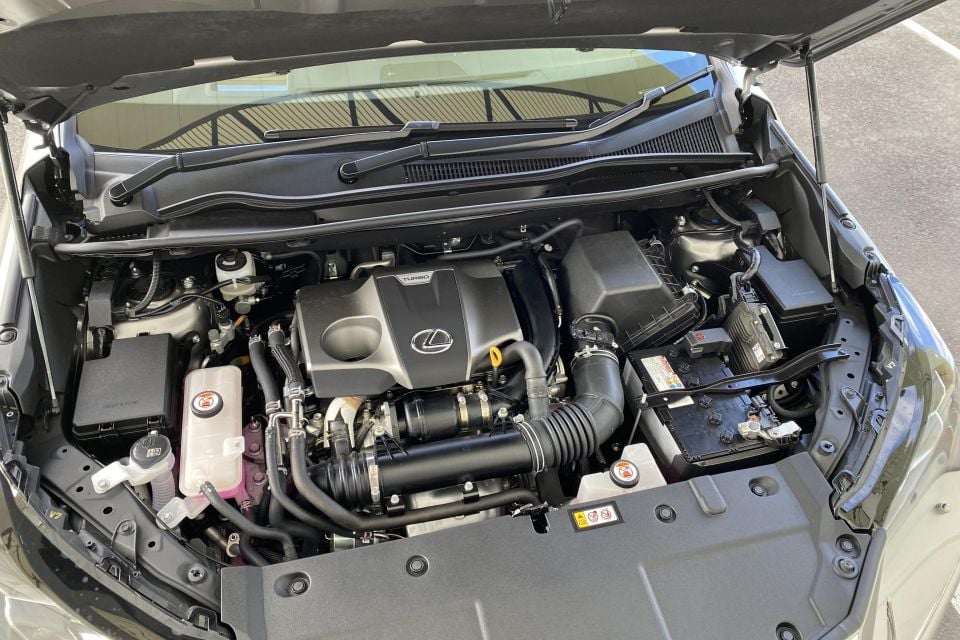

The base Lexus NX comes with front-wheel drive but we’ve got the on-demand all-wheel drive (AWD) version here to better match up against the Mazda.
The engine across all NX300 grades is a 2.0-litre turbocharged petrol four-cylinder making 175kW of power and 350Nm of torque, mated to a six-speed automatic transmission. It has a fuel-use claim of 7.9 litres per 100km using 95 RON petrol.
Our test Mazda by contrast uses a 2.5-litre turbocharged petrol four-cylinder making 170kW and 420Nm (-5kW and +70Nm), also mated to a six-speed automatic transmission. It has a fuel-use claim of 8.2L/100km using 91 RON petrol.
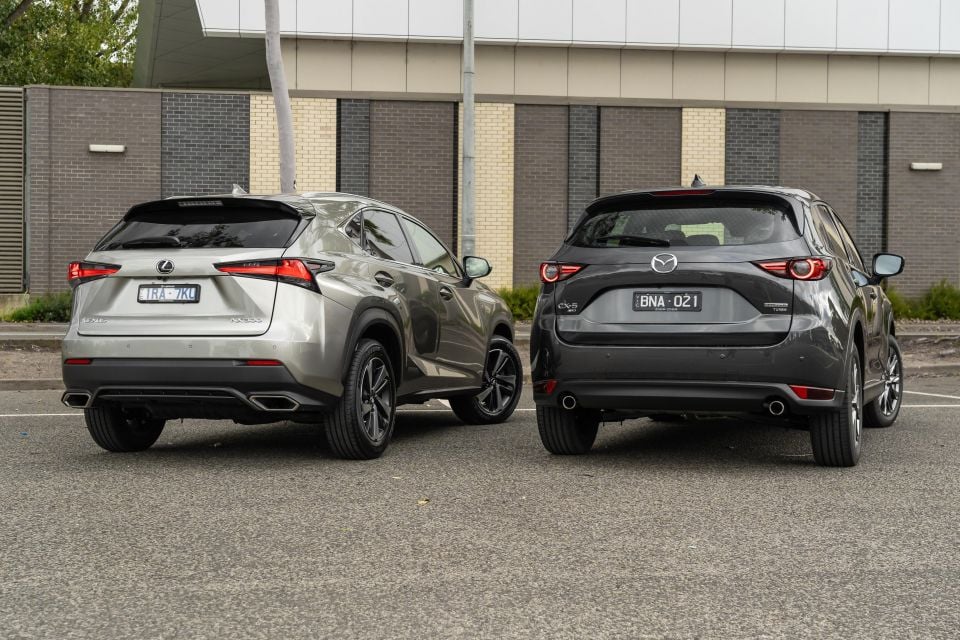
Both the Lexus NX and Mazda CX-5 come with alternative drivetrain options.
Buyers of a Mazda CX-5 Akera can also choose a $3000 cheaper 2.5-litre naturally aspirated petrol with 140kW and 252Nm, or a $500 more expensive twin-turbo 2.2-litre diesel with 140kW and 450Nm.
The Lexus can be ordered with a roughly $2700 more expensive petrol-electric hybrid (called NX300h) pairing a 2.5-litre petrol engine, a small battery, and 105kW front/50kW rear electric motors.
Interestingly, the Mazda diesel’s claimed fuel consumption of 5.7L/100km matches the Lexus hybrid’s claim, though the latter drinks cheaper fuel.
| Lexus NX | Mazda CX-5 | |
|---|---|---|
| Fuel type | 95 RON | 91 RON |
| Displacement | 2.0-litre | 2.5-litre |
| Induction | Turbocharged | Turbocharged |
| Power | 175kW @ 5600rpm | 170kW @ 5000rpm |
| Torque | 350Nm @ 1650rpm | 420Nm @ 2000rpm |
| Transmission | 6-speed automatic | 6-speed automatic |
| Driven wheels | All-wheel drive | All-wheel drive |
| Fuel consumption | 7.9L/100km | 8.2L/100km |
| Towing capacity | 1000kg | 2000kg |
| Power-to-weight | 95.9kW per tonne | 99kW per tonne |

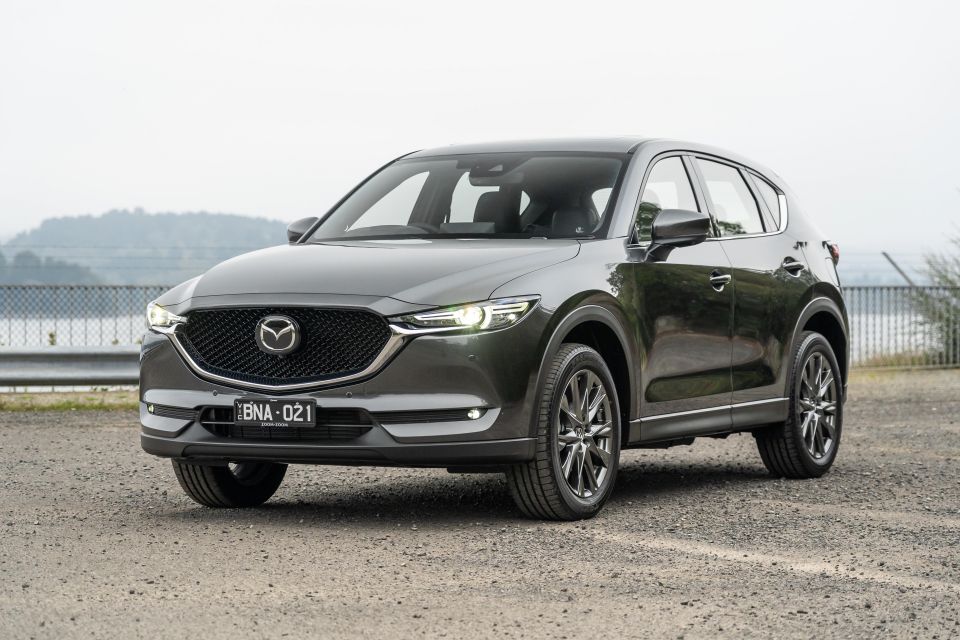
Both offer elevated driving positions, ample wheel adjustment, and somewhat resistant but never heavy steering. The Mazda’s 11m turning circle edges the Lexus’s 11.4m.
They’re mechanically very similar in terms of power-to-weight, though the Mazda’s extra 70Nm of torque proved useful for rolling response. My best time 0-100km/h in the Mazda was 8.04 seconds versus 7.96 seconds in the Lexus.
Neither car’s six-speed transmission isn’t the most advanced piece of technology going around but both did their job just fine.
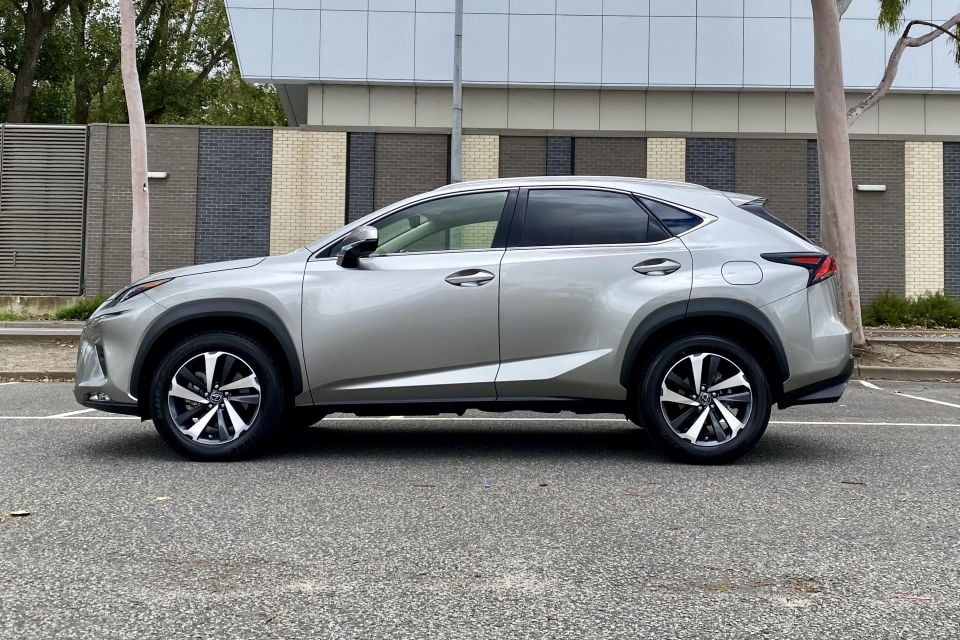
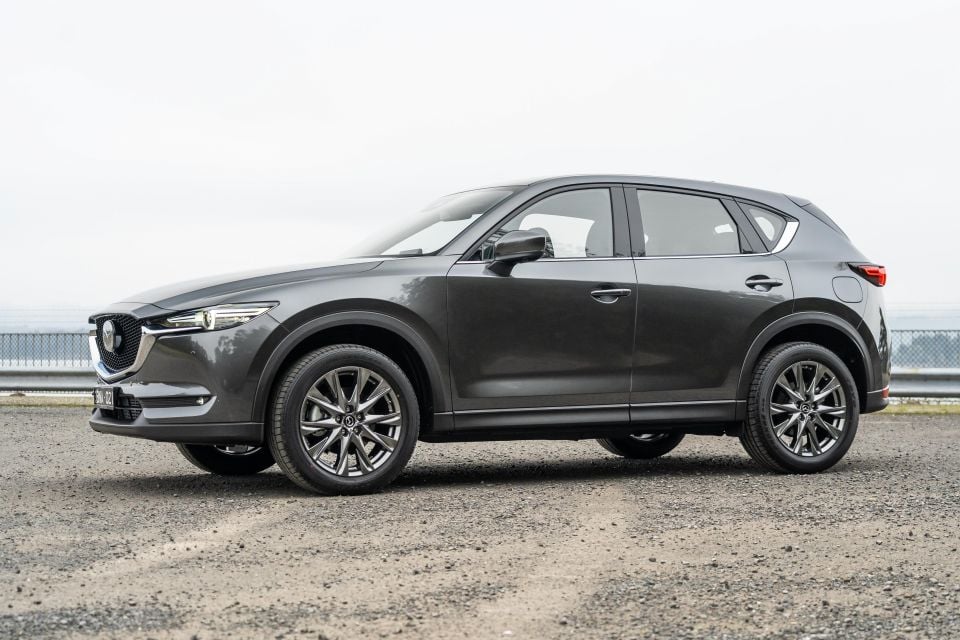
The Mazda’s sports mode encouraged more aggressive downshifts, but the Lexus has a broader array of drive modes include Eco and Sports+ to alter its character.
Both cars’ AWD systems work on an on-demand basis, meaning the cars are two-wheel-drive until onboard slip sensors order some engine torque to the rear. The Lexus uses Bridgetone tyres whereas the Mazda is shod with Toyos.
Both use MacPherson strut front suspension. The Lexus has double wishbones at the rear while the Mazda’s uses a multi-link setup.

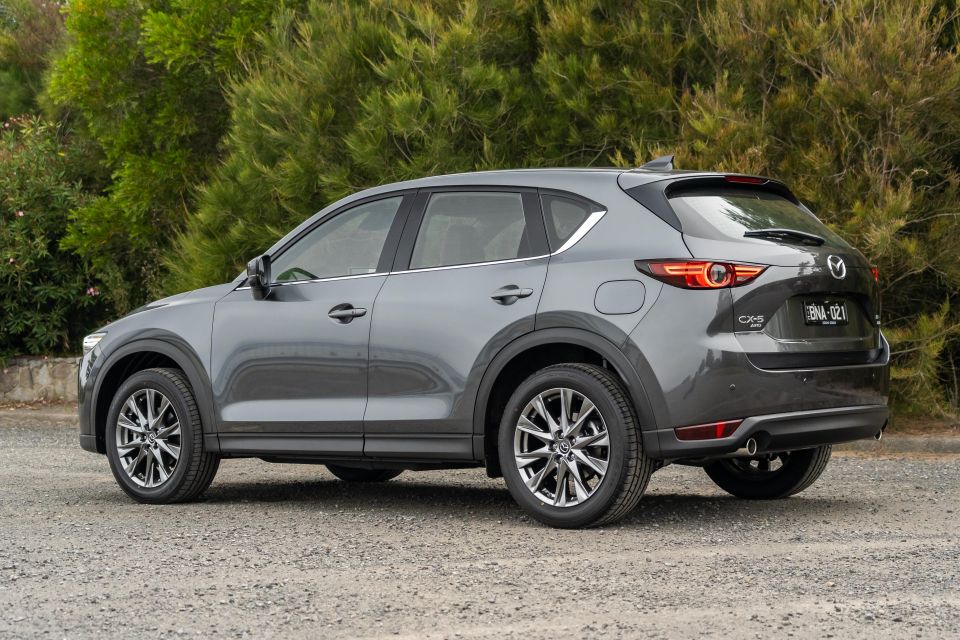
The Lexus Sports Luxury upgrades to performance dampers and Adaptive Variable Suspension that tweaks the ride character based on data inputs from the sensors.
Yet despite having less tricky suspension and larger wheel diameters, the Mazda actually ironed off sharp hits better than the Lexus, and offered more tied-down body control through corners. It proved smoother over low amplitude hits and more engaging dynamically.
That said the Lexus was a decibel quieter at 100km/h (69dB versus 70dB) over coarse-chip roads than the Mazda, which itself is quieter than most mainstream competitors.
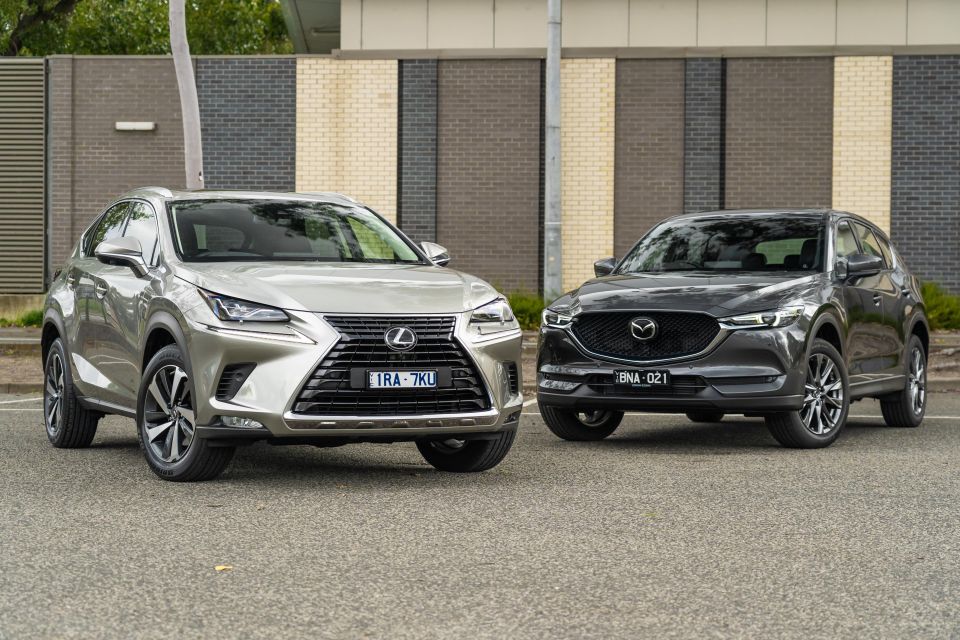
Lexus products come with a four-year standard warranty whereas Mazda provides five years of cover. Both brands have standard roadside-assist programs.
The Lexus’s servicing intervals are either 12 months or 15,000km (whichever comes first). Its capped-price servicing cover three years/45,000km and is $495 per service ($1485 total).
Lexus’s Encore aftersales program includes free loan cars either made available when you drop your car for service, or brought at your house/workplace, among many other perks. Lexus makes this side of its business a major focus.
The Mazda must be serviced every 12 months or 10,000km. The first three visits are capped at $349, $379, and $349 ($1077). However Mazda caps service prices well beyond the first three, details of which you can see here.
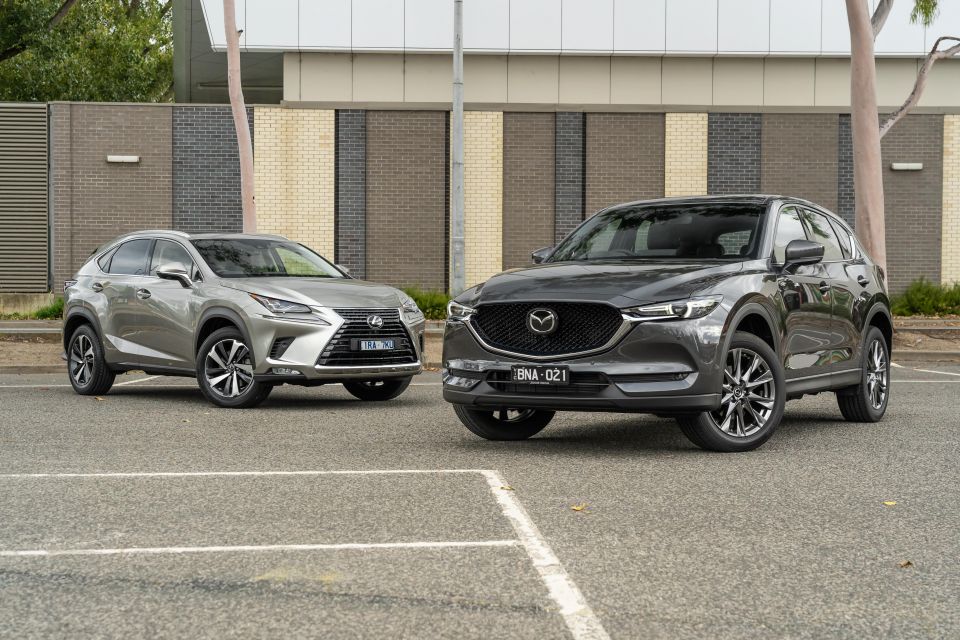
I think you can mount an argument that the Lexus looks bolder, especially with its lovely paint. Its build quality is also typically without fault and the ownership program stacks up against any brand’s offer (warranty term excepted).
But regardless of spec grade the flagship Mazda offers better value, more features, and a superior drive. It may not give you the feel-good vibes of a proper luxury brand, but it’s easy to see why the CX-5 sits in so many buyers’ sweet spots.
Share your thoughts with us in the comments below!
Share your thoughts and write a review of a car you own and get featured on CarExpert.


Derek Fung
3 Hours Ago
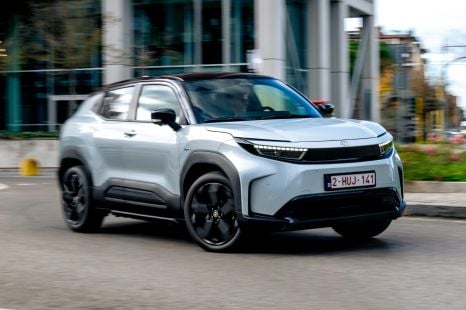

Matt Robinson
9 Hours Ago
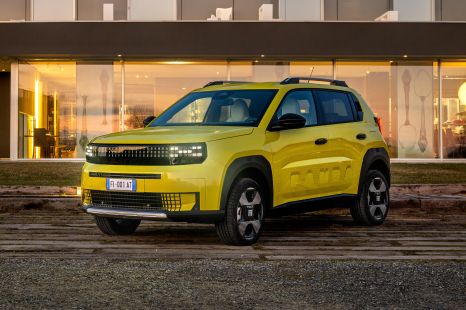

Damion Smy
20 Hours Ago


William Stopford
21 Hours Ago
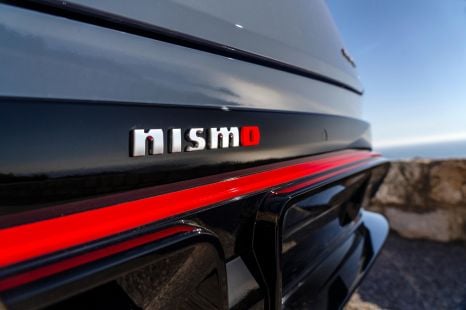

Ben Zachariah
21 Hours Ago


James Wong
22 Hours Ago